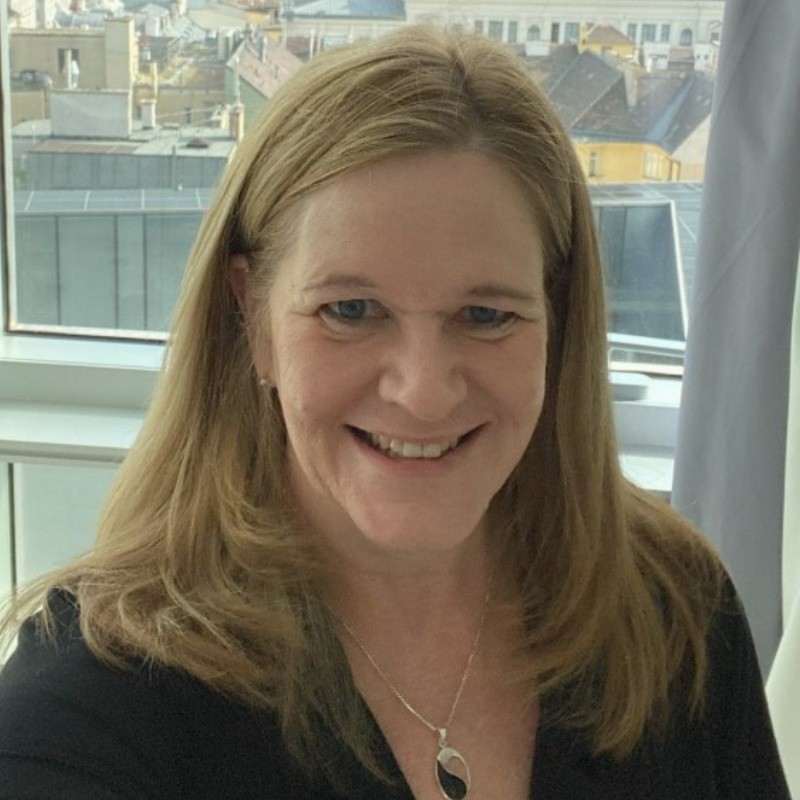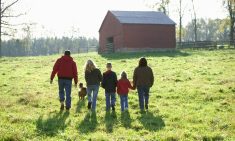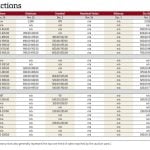If the past few years have taught us anything, it’s about how many of us get so much about the future so wrong. Change happens quickly and you need to adapt fast. Maybe you scrambled for extra labour when someone on your team caught COVID-19. Maybe you sold cattle when consecutive drought years increased feed prices. If you were lucky, you sold your crop after the Russian invasion of Ukraine sent commodity prices skyward.
If only we could know what we’ll be adapting to next.
It’s easy to assume the future will be like today, with minor improvements. It’s more difficult to imagine how different the future might be, shaped by major changes. But that’s what we’re going to try to do.
Read Also

Farmland values: assumptions and realities
Where farmland values are headed and what decisions farmers should make
This is the first in a series of articles about the future. We’ll speak with futurists, forward-thinking farmers and experts from Canada’s agriculture industry. We’ll ask, “What’s the biggest change you see coming that will reshape the agriculture industry 20 years from now?”
We’ll ask, “How will Canadian farms be affected?” Maybe even, “Do you see a way we can start to prepare for this now?”
Why 20 years? It’s far enough away that no one will be judged for missing the mark, but close enough to merit consideration.
Will some of the changes we talk about come to pass? Probably. All of them? Certainly not. But being “right” isn’t the point. The value in imagining potential future scenarios is to explore, discuss and “rehearse” how we might respond. With a range of visions of different futures, we can develop long-term strategies that are flexible and resilient — strategies that are most likely to keep our farms profitable for the next generation.
In this kickoff article, we talk about foresight. Not the sort that comes from a soothsayer staring into a crystal ball, but the formal process of foresight that governments and large corporations have been using for years.
We start by learning how a professional futurist would set to work evaluating your farm’s outlook. Then we can set to work ourselves.
Ask an Expert
Peter Padbury is one of Canada’s most respected futurists. Not only has he worked around the world, Padbury has also looked into the future in multiple sectors, helping governments, businesses and non-governmental organizations use foresight to develop their visions, policies and strategies.
When working with these organizations, a foresight expert like Padbury gathers a group of knowledgeable people from all areas of their sector. He then guides the group through a formal process typically lasting several days, followed by more meetings over a longer period.
Over time the group develops a range of plausible futures. Then they set to work on a go-forward strategy designed to be robust across that range of scenarios.
Ideally, if we were using his model and we wanted to develop a range of plausible futures for the agriculture industry, we’d all get together in person and discuss potential changes. Unfortunately, that’s beyond the scope of this article. But, Padbury says, “that doesn’t mean there’s nothing we can do on our own.”
Padbury outlines five steps in a basic approach to foresight:
- First, read and talk to people to understand the system you’re working within.
- Second, identify emerging forces that will shape the system over the next decade.
- Third, consider what alternative futures are plausible as these forces interact with the system.
- Fourth, ask, “What challenges and opportunities could emerge?”
- And finally, determine what strategies might help you build a better future.
Farmers work within a large, complicated system that includes multiple stakeholders. These include input suppliers, employees, financers, buyers, processors, consumers and more.
When you make decisions on your farm, you’re constantly relying on your internal understanding of this system. For example, when you’re deciding whether to buy a third combine, you’re using your knowledge of machinery markets, interest rate futures, labour availability, commodity prices, weather trends.
The better you understand all of the forces influencing the system, the more sophisticated your mental model will be. Then this clear mental model gives you a stronger foundation to evaluate decisions and consider the impacts of change.
To start, one way to enhance your mental model is to put it down on paper. Foresight experts call this a “system map.”
I’ve drafted a rough system map for a farm. Yours may differ, and I may have missed some points that are important to you. The takeaway is that changes in any of the points in this model will have an impact on the farm, whether those changes are in, for example, new food processing technology or the labour market.

Drivers of change
Once you understand your system, Padbury says the next step is to “identify disruptive changes coming at us that could have a significant impact on one or more parts of the system.” A disruptive change could come as a surprise, and is probably outside your direct sphere of influence.
A change in taste patterns is a trend that develops over time. But a geopolitical change that, for example, stops all trade with China would be a disruptive change driver for many ag businesses. As another example, though, if a technology change that lowers the price of lab-grown salmon below the price of wild-caught salmon, fisheries will be disrupted.
We can’t use our grandparents’ advice to adapt to disruptive change. By contrast, when we’re dealing with incremental changes, like upgrading the GPS software or buying a new planter, some of Grandpa’s advice may still apply.
Padbury suggests several potential disruptors could affect our farms. For example:
- New technologies. Improved sprayer nozzles are an incremental change. But Padbury is thinking of disruptive technology, like lab-grown fish or beef.
- Extreme climate and weather changes. This could increase competition for food and result in food scarcity in large areas of Africa and Asia. “We could see increasing social, economic and political disruption and conflict in these areas, with second and third order impacts that cascade around the world.”
- Unreliable value chains. Geopolitical shifts could have an impact on trade agreements and limit the free movement of agricultural inputs and products as some governments try to ensure local needs are served first.
- Uncertain productivity and supply shocks. If some areas of the globe become unproductive, farmers in remaining productive areas will be under pressure to produce more food.
Horizon scanning
Foresight experts do regular “horizon scanning” using an organized method to look for potential disruptive changes. The better the scan, the better the foresight.
Farmers are always scanning the horizon, literally and figuratively. An article about Japanese robotics could inspire an idea for using similar technology in our fields. Twitter comments about environmental regulations abroad can lead to speculation about legal requirements that could affect us. The key to horizon scanning is to pay attention to a wide range of information.
Foresight experts scan for trends and weak signals. Trends are based on historic data and an “experience that something is happening.” Weak signals are small bits of information that could signify an important shift. Think of university research or emerging trends overseas. A weak signal can lead you to challenge your assumptions.
How do you spot a weak signal?
“People are fairly good at understanding their silo,” Padbury says. “The real surprises that hit them come from outside.” And right now, he says, “we’re in a period of profound change in lots of different areas.”
But here’s another important point. Although it’s human nature to look for potential changes that are highly likely to happen, Padbury urges us to pay attention to weak signals with an unknown or low probability.
How do we spot weak signals? The first step is, Look! Visit online news sites from other countries or industries. Read scientific and cultural blogs. Follow a wide range of social media accounts. In real life, talk to people — farmers, people in other areas of agriculture, and people working in completely different industries.
“Most people discount the future,” Padbury says. But he has some advice: “Prepare for a period of accelerating change.” It’s possible, he says, and essential.
Foresight versus forecasts
These are two very different ways of looking at the future. Let’s start with forecasts. Forecasts predict incremental changes based on existing trends and current conditions and they are primarily based on existing data. For example, a forecast of future farmland prices considers today’s price, past trends, commodity prices and interest rates.
Similar to forecasts are trends. To produce a trend line, we identify changes happening now and extrapolate from there. Trends are important, but they are based on the current system. If that system is disrupted, trend information is unreliable. For example, any trends related to Canada’s U.S. beef exports were completely upended when exports were banned during the 2003 BSE crisis.
Foresight, by contrast, is the process of looking at plausible alternative futures. Foresight considers trends and numbers, but also adds qualitative information. Instead of just one variable, the foresight process involves examining an entire system. For example, a foresight process that looks at farmland values might also consider a scenario where climate and political change bring vast numbers of refugees to Canada, leading to wild increases in land prices.
This kind of scenario can’t be forecasted using traditional methods, but it can be imagined.
Check out policy horizons Canada
Futurist Peter Padbury was part of the leadership team that developed the Government of Canada’s foresight centre called Policy Horizons Canada. Staff at Policy Horizons analyze future challenges, talk about their forward-looking research with civil servants and citizens, and spread knowledge about foresight throughout the public service.
Policy Horizons publishes many of its research papers. Find these papers online, along with detailed explanations of the foresight process at horizons.gc.ca.
Share your signals
Have you spotted a weak signal that could be the beginning of a disruptive change? If that change takes place, how will it have an impact on our farms and the food system? Let us know. Email: [email protected]
















